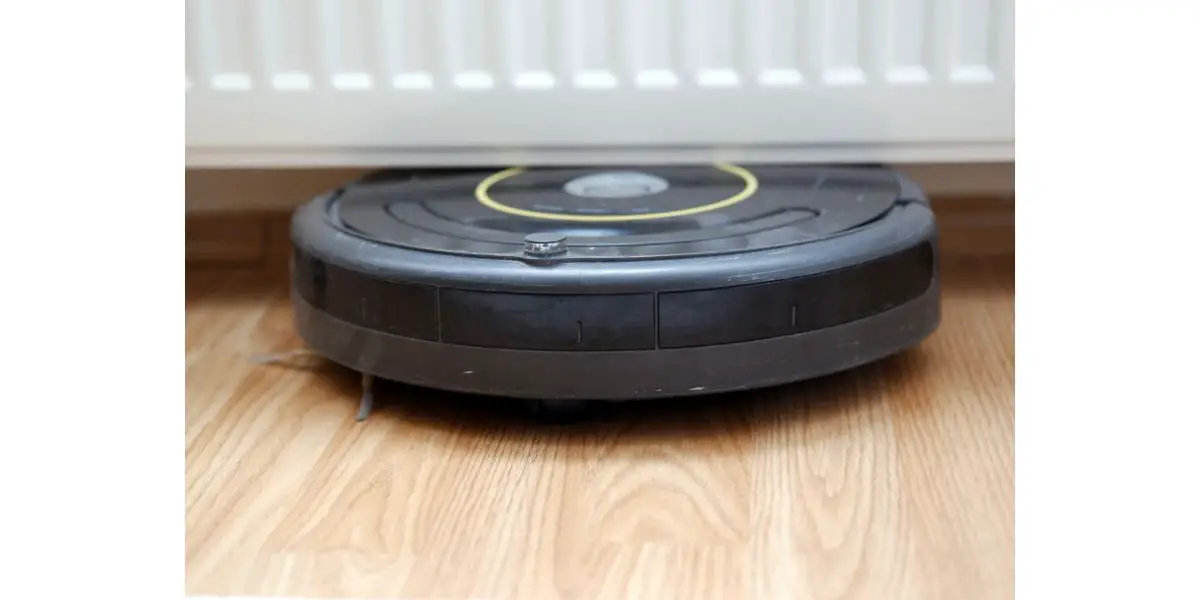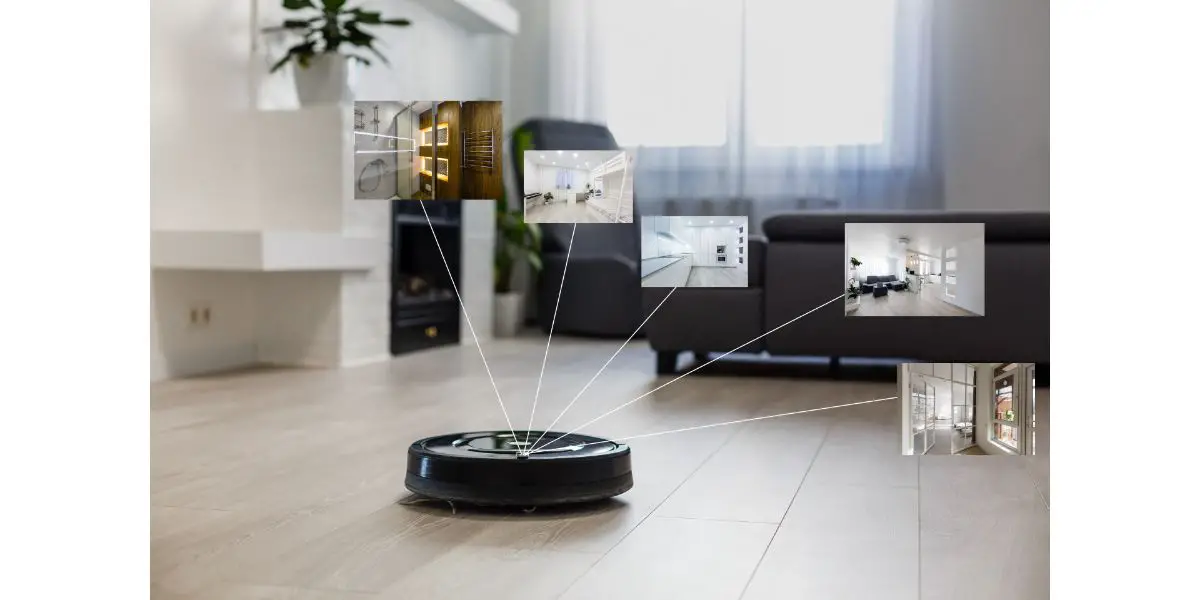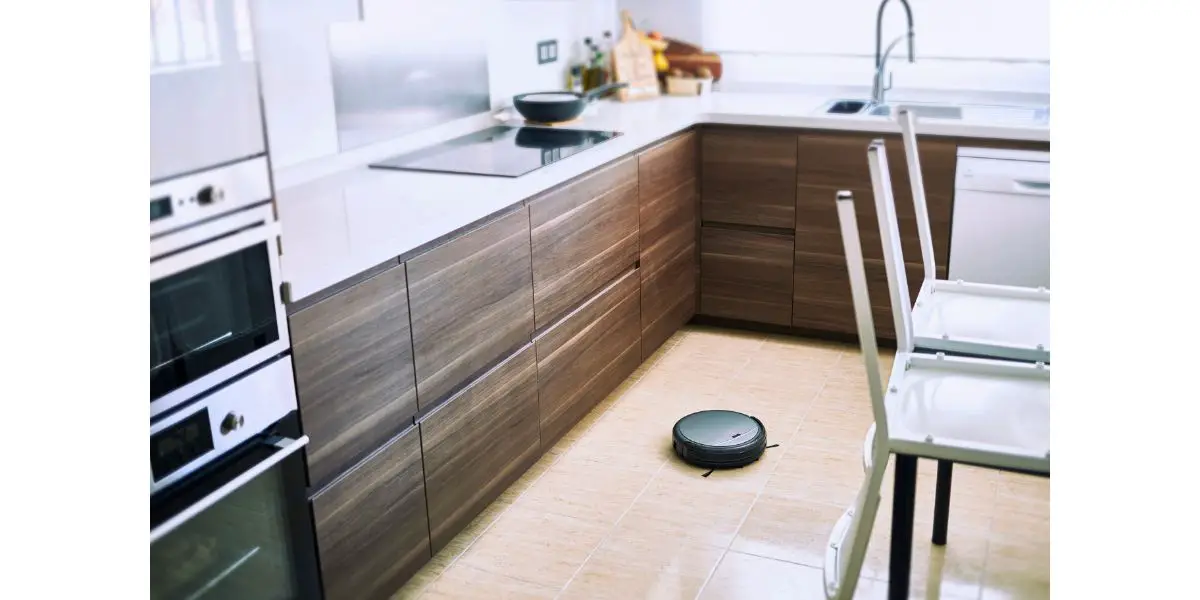Disclaimer: This post may contain affiliate links, meaning we get a small commission if you make a purchase through our links, at no cost to you. For more information, please visit our Disclaimer Page.
We all love a good time-saving piece of tech to make our lives easier, right? This explains the increased popularity of the Roomba – a robot cleaning AI device that takes all the effort out of cleaning your floors. Still, Roomba is not without its issues – the most common being a tendency to get “stuck.”
Common reasons are low battery, floor obstructions, dark carpets, wet floors, or a dirty and clogged-up device. Still, as detailed below, most of these problems have a reasonably easy fix. No matter your issue, you will find one or more solutions to fix your Roomba’s stalling.
Table of Contents
Why Does My Roomba Keep Getting Stuck? (5 Common Causes)
1. There Are Obstructions On The Floor
The term “obstruction” doesn’t just apply to apparent barricades such as furniture or walls – everyday objects, like clothes and toys, can also cause your Roomba to get stuck. When this happens, the Roomba will often stop in front of the obstacle and await a restart.
A popular source of obstruction is cords and cables. Charging cables, power trips, and computer cords can trap your Roomba – particularly older models – until they get stuck and cannot move.
Ensuring the Roomba’s pathway is clear and cable-free is an excellent way to keep it on track. If wires are a consistent problem, try taping – or otherwise attaching them – to your walls. A good way to deduce that obstacles are the culprit is to look for the notification “Move Roomba to a new location.”
2. The Floor Surface Is Not Supported
Some Roomba models – particularly older ones – do not support cleaning on certain floor types. If your Roomba can’t adapt to a particular floor surface, it will most likely get stuck because it doesn’t have the correct medium to provide a cleaning service.
Older generations, like the Roomba 1450, often have issues with dark rugs as the lack of light reflection causes the robot to mistake them for cliffs. The best solution is to remove any dark rugs before you start the cleaning process.
However, suppose you have a black (or dark) carpet – in that case, you might disable the step sensors. Only do this if your Roomba is working in an area where no steps or ledges are present. Disabling the sensors means that the Roomba will no longer be able to detect drops and could easily fall down the stairs, causing severe damage to the robot.
Another floor surface that could be a problem is a wet floor, which can lead to electrical malfunctions. For this reason, you must always dry your floors before putting Roomba to work. This also helps the robot to perform at its optimum level.
3. The Room’s Lighting Is Insufficient
Roomba robots are AI devices that rely on optic sensors, motion sensors, and infrared tech to function optimally. In order to detect objects, these devices need a certain amount of light – without it, the lack of clarity can cause them to become stuck.
The navigation system relies on a camera that locates a room’s different areas using adequate lighting. If you fail to light each room sufficiently, you may find that your Roomba fails to clean the site properly.
4. Your Roomba Has A Low Battery
If your device is not adequately charged before you set it to clean, you may become more stuck as its battery begins to run out of charge. If you’re curious on how long a Roomba takes to clean a room, check out our article here.
5. The Roomba’s Brushes Are Dirty
One of the biggest mistakes that Roomba owners make is not cleaning their device owner enough. When this happens, dust and dirt gather around the brushes and bristles, preventing the machine from working at optimum capacity and often causing it to become stuck at random intervals.
Sometimes dirty or clogged Roomba wheels can also create similar issues – a common sign of clogged wheels is a squeaking noise that can lead to the Roomba getting stuck. A particularly common culprit is hair that becomes entangled in the middle of the wheel and causes it to jam.
How Can I Fix The Issue With A Roomba That Keeps Getting Stuck? (8 Ways)
1. Reset Your Roomba
If you’re having issues with your Roomba’s functionality, the first thing you should try is restarting your device. Engaging a power reset helps discharge the remaining electricity and solves many problems that could be causing your Roomba to get stuck.
How To Power Reset Your Roomba:
- Turn the Roomba upside down and unscrew the four screws from the battery latch.
- Remove the batteries and allow them to stand for five minutes.
- Place the batteries back into their compartment and reattach the screws to the latch.
- Turn your device right side up and test it.
If a power reset fails to make a difference, you could try updating your Roomba to check for any software issues. To conduct an update, do the following:
- Make sure your Roomba is:
- On its charging base
- Charging
- Connected to wifi
- Open the iRobot app
- Press the “update” button on the home screen
- Then press “request update.”
Note that this process can take a couple of hours to run a full update, so you’ll need to leave your Roomba robot alone for a while as it completes the process.
2. Check The Roomba’s Route For Obstructions
Obstructions are a common cause of your Roomba getting stuck, so this is a good solution if you need help with your device. To help determine whether obstacles are the problem, try running your device on a completely smooth floor to see if you still face the same issues.
If your Roomba works glitch-free on a smooth surface or if you suspect that obstacles could be the problem, try the following:
- Go onto the Roomba app and open the Roomba route with which you are having issues.
- Walk the entire pathway that your Roomba travels and move any obstacles, no matter how small.
If you’re interested in reading more about this topic, check out our article on how a Roomba knows when to stop.
3. Adapt Your Environment
Moving a few clothes and toys from your Roomba’s path is easy, but moving furniture is more challenging. If you have a lot of low wooden furniture, such as couches or lounge chairs, you may find that your Roomba struggles to clean around them.
One way to combat this is to purchase and install furniture risers that create a gap of at least three inches gap between the floor and the furniture. This can help you achieve a better clean and fewer issues without rearranging your house.
Alternatively, try blocking gaps with large objects that your Roomba can easily recognize and avoid. Not only do you avoid the furniture issue altogether, but you also help ensure that your Roomba doesn’t become trapped beneath anything.
4. Charge And Clean Your Roomba
Sometimes your Roomba randomly stalling can signal that it requires a little TLC. If nothing is in its path when it gets stuck, then a low battery could be the problem. Charge your device for at least 30-60 minutes by placing it on the dock and hitting the “clean” button on the Roomba’s main screen.
The average Roomba battery should last an hour after charging; if not, you might need to replace the battery altogether. However, a standard Roomba battery should last 2-3 years with adequate care.
Another reason your Roomba might get stuck at random points on its route is a build-up of dirt. If there are no apparent obstructions and its battery is charged, then cleaning your Roomba robot is the next best step.
- Turn the Roomba robot upside-down and unscrew the screws that attach and hold the side brush.
- Take the brush out and clean it with water.
- Next, remove the bristle (also attached with a screw in the center of your device).
- Give the bristle a thorough clean with water.
- Leave the brush and bristle to dry completely.
- Once no moisture remains in the brush or bristle, replace them on the Roomba and screw them securely into place.
Important: Always ensure your attachments are completely dry, and allowing moisture to penetrate the Roomba could cause the hardware to malfunction.
5. Detangle the Caster Wheel
Anytime you notice the caster wheel of your Roomba squeaking, it’s a good idea to disassemble it and look for any hair or debris that could be causing an issue.
- Hold the assembly of the caster wheel firmly to detach it from the Roomba.
- Push the wheel out of its housing and remove any debris or hair.
- Ensure you also remove any hair or debris from its cavity.
- Once cleaned, place the wheel back into its housing (ensuring that the axle snaps back into place) and reassemble it into the Roomba.
6. Alter Your Roomba’s Route
Your Roomba will automatically go through your house by itself, creating a cleaning pathway encompassing all your living space. This means that, generally, you won’t need to create specific routes for your Roomba. However, there are occasions when configuring your Roomba’s route could help eliminate problems.
If your Roomba seems to run into issues at a specific point in its route, try altering the route to avoid that particular area.
How To Alter Your Roomba’s Route:
- Open the Roomba app and select the “mission” tab.
- Select the route that your Roomba is having issues with.
- Reconfigure the route so your Roomba can avoid any walls, uneven surfaces, or other problem areas.
7. Conduct A Factory Reset
If all else fails, try conducting a factory reset on your Roomba robot to help alleviate the issues. This process erases all software configurations to your robot, which can help to solve the problem.
- Ensure the Roomba is turned on.
- Press and hold the “home,” “clean,” and “spot clean” buttons simultaneously until the light ring encircling your Roomba starts to flash.
- At this point, let go of all the buttons and allow the Roomba to reset itself.
- While the Roomba conducts this process, avoid touching or tampering with the device in any way.
8. Contact Customer Support
You might feel a little fed up if you’ve tried every fix on this list with no success. Still, we have the solution. When everything else fails, contact the iRobot Customer Care team, who can discuss your specific issues and help understand why your Roomba continues to stall.
Final Thoughts
Roombas are smart-tech robots that do an excellent job of cleaning your home, but like all technology, there can be glitches. Due to the sophisticated programming of the device, certain things, like dark carpets or insufficient lighting, can confuse your Roomba and upset its streamlined process.
If you’re having problems, first try resetting your device. If that makes no difference, ensure your device is charged, clean the Roomba itself and the area it is trying to traverse and check for software updates. And if every other fix fails, remember to contact the specialists at the customer care center.



